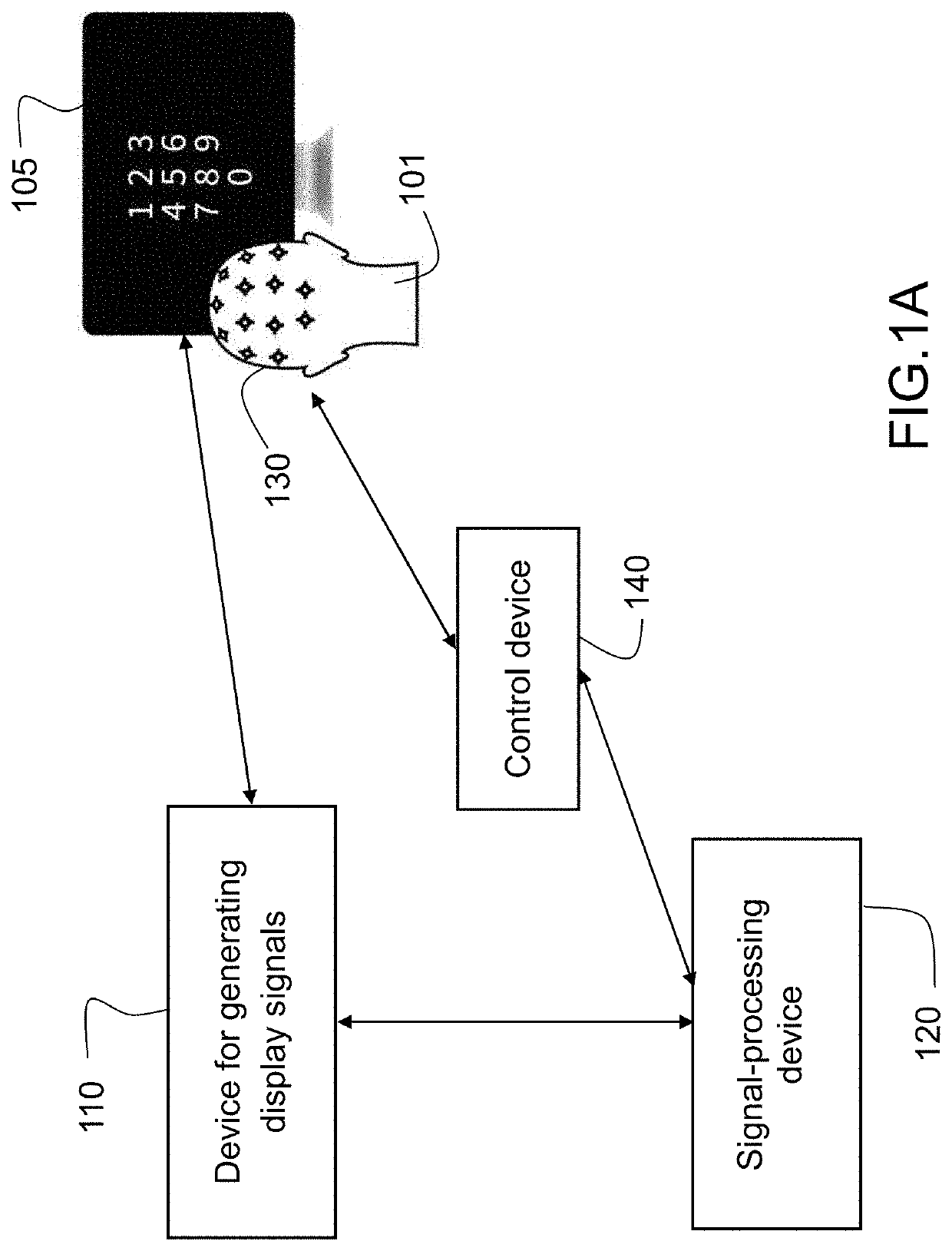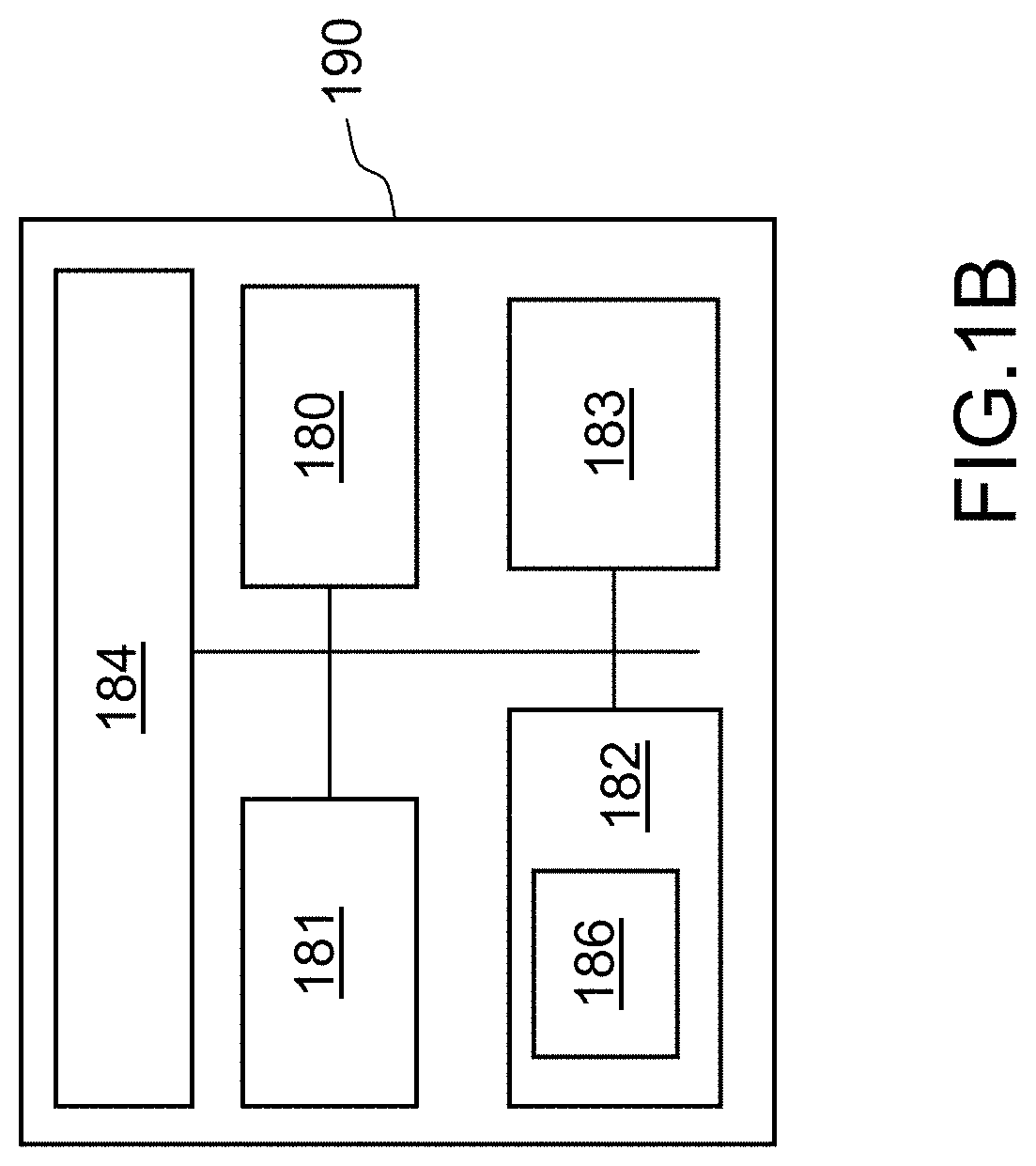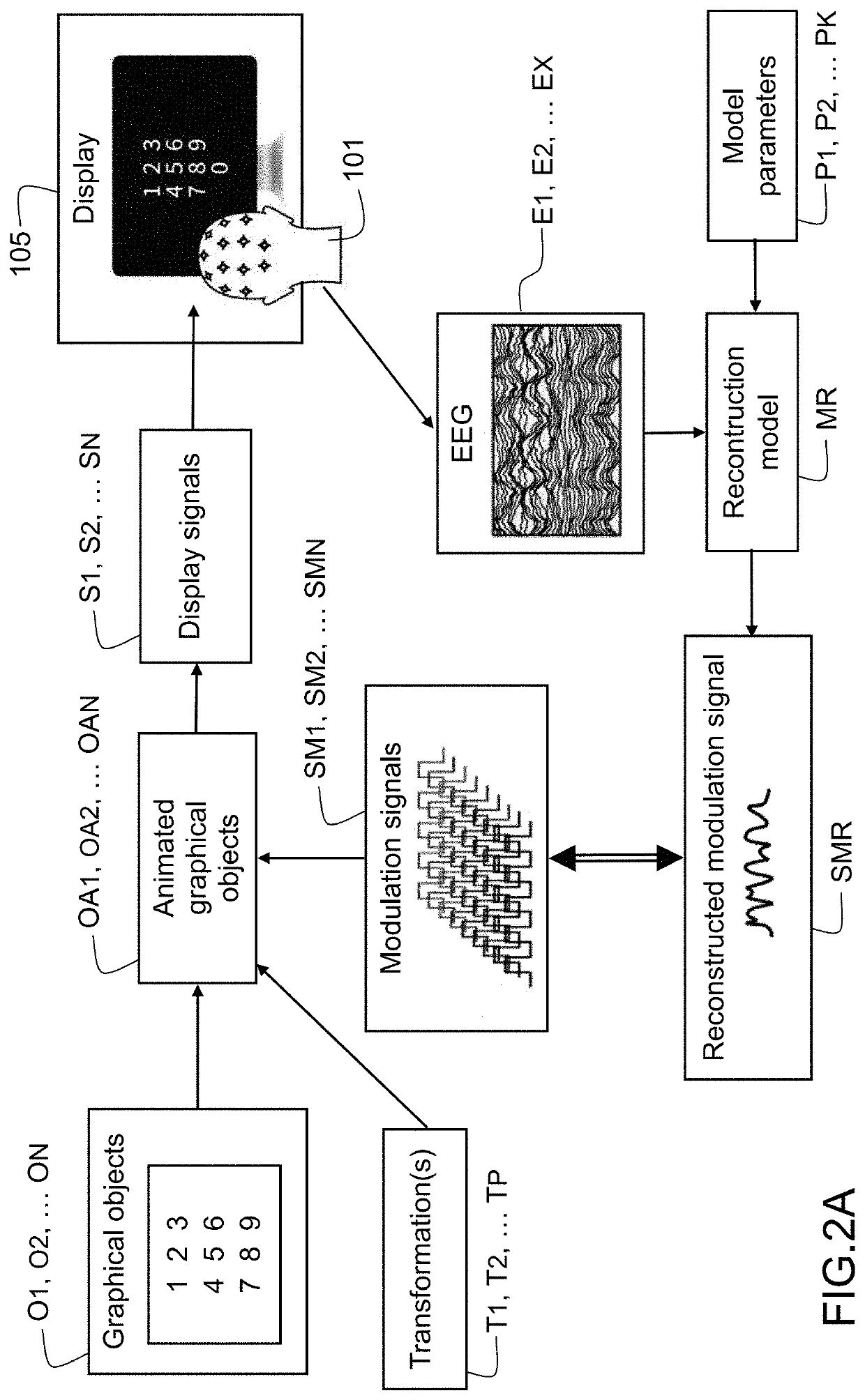Decoding the visual attention of an individual from electroencephalographic signals
- Summary
- Abstract
- Description
- Claims
- Application Information
AI Technical Summary
Benefits of technology
Problems solved by technology
Method used
Image
Examples
Embodiment Construction
[0042]The present description is given with reference to functions, functional units, entities, block diagrams and flowcharts that describe various embodiments of methods, systems and programs. Each function, functional unit, entity and step of a flowchart may be implemented by software, hardware, firmware, microcode or any appropriate combination of these technologies. When software is used, the functions, functional units, entities or steps may be implemented by computer-program instructions or software code. These instructions may be stored or transmitted to a computer-readable storage medium and / or be executed by a computer in order to implement these functions, functional units, entities or steps.
[0043]The various embodiments and aspects described below may be combined or simplified in multiple ways. In particular, the steps of the various methods may be repeated for each set of graphical objects in question and / or each user in question, the steps may be inverted, executed in p...
PUM
 Login to View More
Login to View More Abstract
Description
Claims
Application Information
 Login to View More
Login to View More - R&D
- Intellectual Property
- Life Sciences
- Materials
- Tech Scout
- Unparalleled Data Quality
- Higher Quality Content
- 60% Fewer Hallucinations
Browse by: Latest US Patents, China's latest patents, Technical Efficacy Thesaurus, Application Domain, Technology Topic, Popular Technical Reports.
© 2025 PatSnap. All rights reserved.Legal|Privacy policy|Modern Slavery Act Transparency Statement|Sitemap|About US| Contact US: help@patsnap.com



